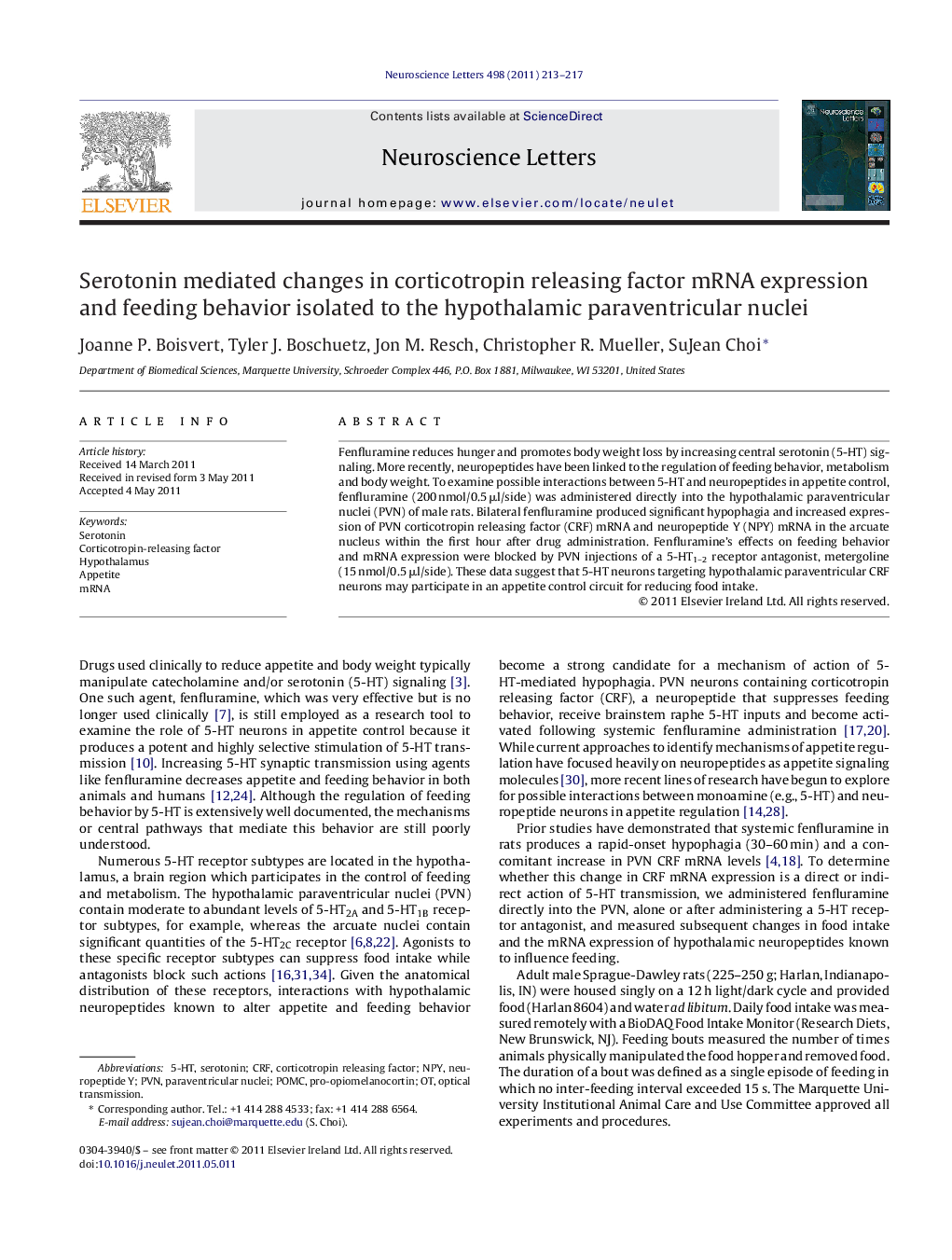| Article ID | Journal | Published Year | Pages | File Type |
|---|---|---|---|---|
| 4345162 | Neuroscience Letters | 2011 | 5 Pages |
Fenfluramine reduces hunger and promotes body weight loss by increasing central serotonin (5-HT) signaling. More recently, neuropeptides have been linked to the regulation of feeding behavior, metabolism and body weight. To examine possible interactions between 5-HT and neuropeptides in appetite control, fenfluramine (200 nmol/0.5 μl/side) was administered directly into the hypothalamic paraventricular nuclei (PVN) of male rats. Bilateral fenfluramine produced significant hypophagia and increased expression of PVN corticotropin releasing factor (CRF) mRNA and neuropeptide Y (NPY) mRNA in the arcuate nucleus within the first hour after drug administration. Fenfluramine's effects on feeding behavior and mRNA expression were blocked by PVN injections of a 5-HT1–2 receptor antagonist, metergoline (15 nmol/0.5 μl/side). These data suggest that 5-HT neurons targeting hypothalamic paraventricular CRF neurons may participate in an appetite control circuit for reducing food intake.
► Fenfluramine is a useful pharmacological tool to increase serotonin signaling. ► FEN injected directly into the PVN suppresses feeding and increases CRF mRNA. ► Prior metergoline treatment blocks FEN effects on feeding and mRNA expression. ► 5-HT–CRF interactions in the PVN may be a useful therapeutic target for weight loss.
